Musical saw: history - technique - Marlene Dietrich - Katharina Micada | Musical Saw
Musical saw
Main menu:
musical saw
Wikisaw
Worth knowing about the Musical saw
Instrument and Playing technique
The Musical saw as a musical instrument is a wide large saw made of rolled spring steel, a crosscut saw, which is usually brought to sound by bowing with a bow or sometimes by attack with a mellet to swing.
It makes a bright spherical sound. The sound resembles a soprano voice and the saw is also the instrument closest to the human voice.
To create a sound a slight S-shape of the saw blade is essential, because this shape determines the oscillating part of the saw blade. Exactly at the point where the two curves of the S meet is the sound area and is therefore bowed there with the bow. Bending the complete S-shape also changes the sound area. The closer it gets to the saw handle, the larger and lower it gets, the farther away from the handle, towards the top of the saw blade, the smaller the sound area, and thus the higher the sound. Comparable with the different size platelets of a xylophone or metallophone.
The pitch is 2-2 ½ octaves for most music saws, and for the French "Lame Sonore" (traditionally without teeth) about 3 ½ octaves. The lowest note on a (big) music saw is about c '. the highest note on the (French) saw ca f ''''. Whether big / low saws or smaller / higher saws are played depends on the personal preference of the instrumentalist.
Even some traditional craft saws can be used to make music, but the range is limited to about 1-1 ½ octaves and includes due to the small blade only a very high range.
Since the bending of the saw blade requires a lot of effort for the hand or the thumb, many - especially professional - sawing players prefer a handle at the upper end of the saw blade. The handle is clamped, screwed or plugged.
The vibrato is traditionally created with a trembling leg. Some modern players prefer vibrato with the help of the upper handle.
As a further sound opportunity also Flageolett sounds can be played. These are caused by a slightly stronger bend and the bowing of other points on the saw blade. These notes can also be played simultaneously with basic notes, so that polyphony is created.
History
The exact origin of the Musical Saw is not historically documented. Obviously, for the first time lumberjacks came up with the idea of eliciting sounds from a saw. The first public performances probably have been in the first years of the 20th century. The instrument quickly found its way into variety shows, for the first time in a vaudeville show with the Weaver Brothers in 1919. In the 1920s, a veritable boom began, with more than 20.000 Musical saws, means saws specially made for making music, were sold all over the world. In most salon orchestras, there was someone who played this instrument and used it as special colour or exotic solo.
History
The exact origin of the Musical Saw is not historically documented. Obviously, for the first time lumberjacks came up with the idea of eliciting sounds from a saw. The first public performances probably have been in the first years of the 20th century. The instrument quickly found its way into variety shows, for the first time in a vaudeville show with the Weaver Brothers in 1919. In the 1920s, a veritable boom began, with more than 20.000 Musical saws, means saws specially made for making music, were sold all over the world. In most salon orchestras, there was someone who played this instrument and used it as special colour or exotic solo.
Marlene Dietrich learned to play on this instrument in 1927 and took her Musical saw to Hollywood. Not only there, she made a splash - she enjoyed the reputation of the "First Lady" of the Musical Saw - but also in the so-called USO shows in World War II in support of American troops.
Since the 1920s, the Musical saw was also used in contemporary classical music, for example in the Shostakovich opera "The Nose" or in Kachaturian Piano Concerto 1936. At this time, the international term was "Flexaton", which causes sometimes still confusion because there is an instrument with the same name, which is also used in the symphony orchestra. Which instrument is meant results from the score and from the musical and historical context. In the 1960s, Hans-Werner-Henze wrote some virtuoso saw passages in his opera "Elegy for young lovers". Other operas in which the Musical saw occurs are: "Oedipe" (George Enescu), "Pnima" (Chaya Czernowin), "Ubu rex" (Krystof Penderecki), "Schuhu" (Udo Zimmermann) and the musical "Black Rider" by Tom Waits. Furthermore, there are parts for Musical saw in concert music like "Stille und Umkehr" by Bernd Alois Zimmermann, "Quattro pezzi per orchestra" (1959) by Giacinto Scelsi, the song cycle "Ancient voices of children" by George Crumb, "5 Préludes" by Claude Debussy in an orchestration by Hans Zender and others. Other composers who used the Musical saw are f.e. John Corigliano and Leif Segerstam.
Parallel to contemporary classical music, the Musical saw found its way into the folk music of many countries such as Russia, Finland and the USA. Today it is used in many musical sectors: folk, pop, rock, jazz, chanson, cabaret, experimental music, improvised music, theater and film music, ...
The Musical saw in films
Probably the best-known film with a Musical saw is a series of "Pippi Longstocking", in which Konrad the tramp plays the saw in a somewhat sinister scene of the saw. Also very well known is the final scene from "Delicatessen" (1991) with a duet for Musical saw and violoncello, which is performed on a house roof.
Probably the best-known film with a Musical saw is a series of "Pippi Longstocking", in which Konrad the tramp plays the saw in a somewhat sinister scene of the saw. Also very well known is the final scene from "Delicatessen" (1991) with a duet for Musical saw and violoncello, which is performed on a house roof.
Film Music with Musical Saw: "One Flew Over the Cuckoo's Nest" (1975), "Pirates of the Caribbean - At the End of the World" (2007), "Another Earth" (2011)
Festivals, Guinness Record and World Cup
Annual Musical Saw Festivals:
Annual International Musical Saw Festival (held in mid-August in Santa Cruz, California), hosted by the IMSA (International Musical Saw Association) and the New York City Musical Saw Festival in New York City).
Annual International Musical Saw Festival (held in mid-August in Santa Cruz, California), hosted by the IMSA (International Musical Saw Association) and the New York City Musical Saw Festival in New York City).
In 2008, a Guinness World Record was set for the world's largest sawing ensemble (26 players) in Gostyn (Poland). This was topped by the renewed Guinness World Record at the New York City Musical Saw Festival 2009, in which 53 players "sawed" "Ave Maria" by Schubert.
In 2011 in Jelenia Góra (Poland) a World Musical Saw Championship was held.
Text © Katharina Micada
Text © Katharina Micada
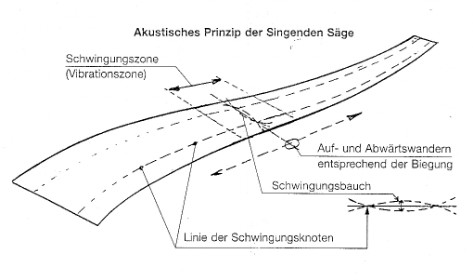
from the tutorial book by Wilfried Glas (1992)
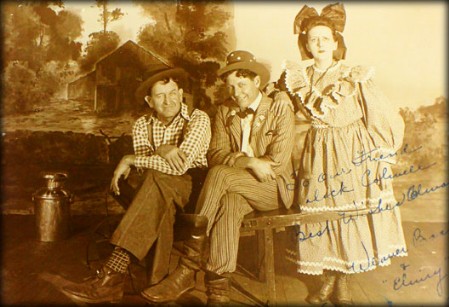
The weaver brothers and Elviry (about 1913)
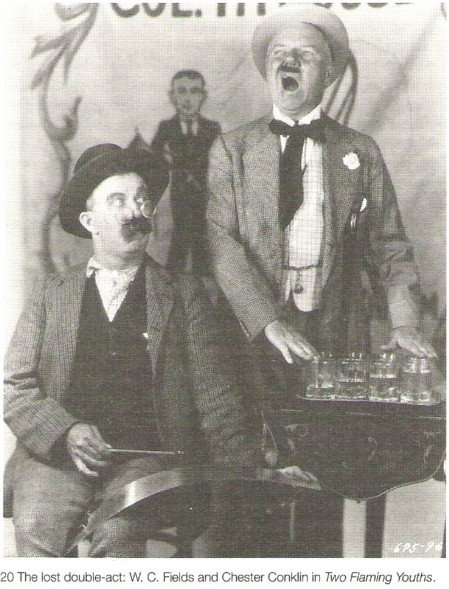
Fields and Conklin 1927
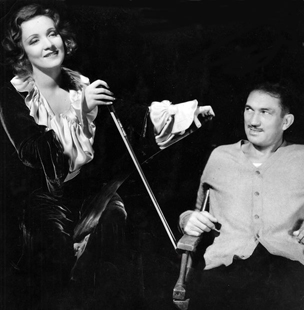
Marlene Dietrich 1931 on the set of the film "Dishonored"
with her film partner Victor McLaglen
with her film partner Victor McLaglen
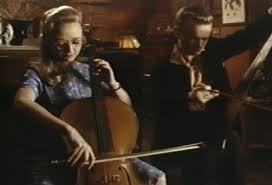
Scene of the film "Delicatessen" (1991)
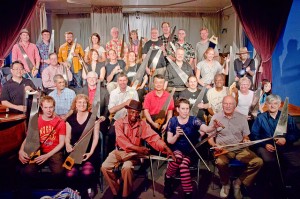
New York City Musical saw Festival
photo by Harris Grabber
photo by Harris Grabber
